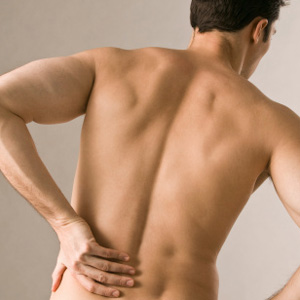Ankylosing Spondylitis in Croydon

What is Ankylosing Spondylitis?
Ankylosing Spondylitis is an idiopathic inflammatory condition which most commonly affects young males between the ages of fifteen and thirty years of age.
This condition affects men 3:1 over woman, it distinctly involves the spine (axial skeleton), causing gradual stiffening, decreased lumbar lordosis and increased thoracic kyphosis.
A decrease in chest expansion due to costo-transverse involvement is often apparent. One in four sufferers demonstrate permanent changes especially in the hips, shoulders and knees, while three to four percent develop atrio-ventricular conduction defects (arrhythmias/murmurs).
Bilateral sacroiliac pain, lower back stiffness, and thoracolumbar junction pain. Sciatica above the knee with piriformis spasm and periods of remission are not usual.
Signs include:
- Decrease in chest expansion due to costo-transverse involvement affecting expansion of the rib cage on inhalation and exhalation.
- Trunk muscle atrophy, paraspinal muscle spasm, reduced mobility.
- Anterior chest pain due to costochondritis which may mimic cardiac and pleuritic conditions.
- Pain and tenderness over bony protuberances manifests enthesopathies at the calcaneus, pubic symphysis, Iliac crests, trochanters, Ischial tuberosities and costal cartilage.
Blood tests
Blood tests for many idiopathic arthridities are usually non-specific, non-definitive. Blood tests may demonstrate an elevated (ESR) Erythrocyte sedimentation rate and HLA-B27 profiles may be observed.
Radiographic signs
Plain film radiographs will usually only show when the Ankylosing Spondylitis has been present for an extended time. The initial changes occur because of inflammatory cell infiltrate (pannus) which forms a layer over articular cartilage causing destruction and subchondral erosion leading to bony ankylosis (fusion). A similar process occurs at bone-ligament /tendon junctions with a gradual transition of fibrous tissue to bone.
Exercises
There are a number of different exercises that are suitable for the management of Ankylosing Spondylitis (AS). However, the most important aspect is to ensure that the exercises are low impact, to reduce the stress on the affected joints. As such swimming is one of the more effective and popular options.
Alternative and complementary health and other forms of low impact exercise that are suitable include: yoga, pilates and Tai Chi.
Postural and stretching exercises are especially important in maintaining movement, particularly in the lumbar spine.
Book Your Time
For help with exercises for back pain and stretches to relieve Ankylosing Spondylitis call Croydon Sports Injury Clinic Ltd today!
CONTACT US

